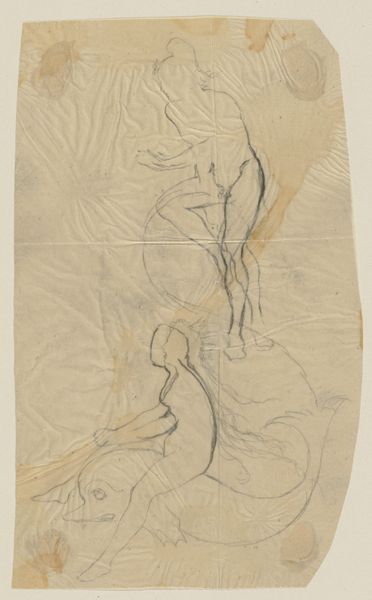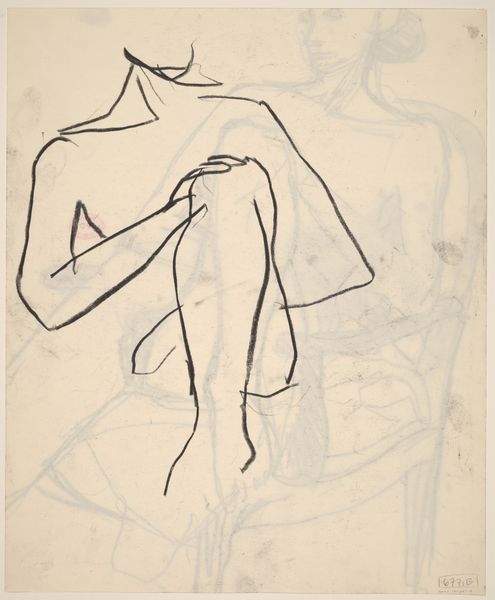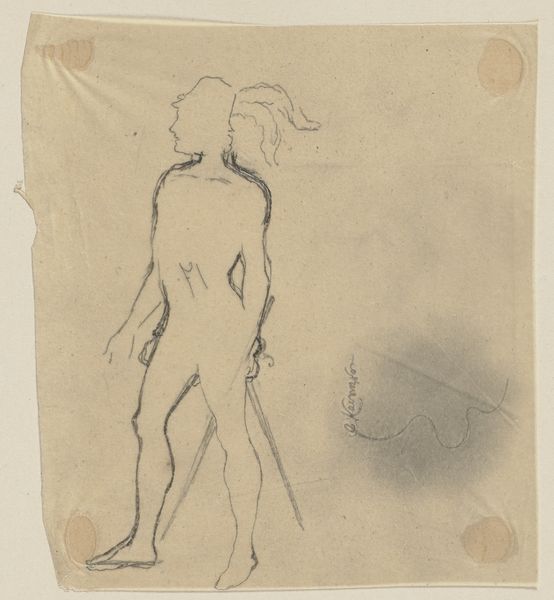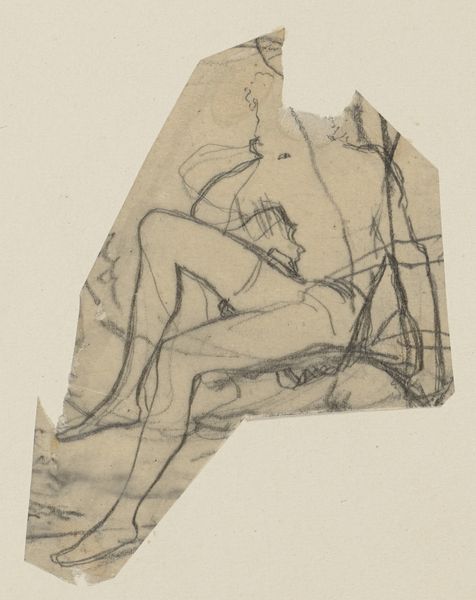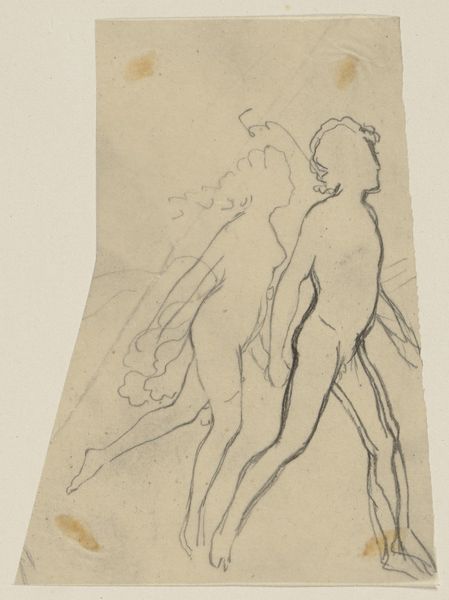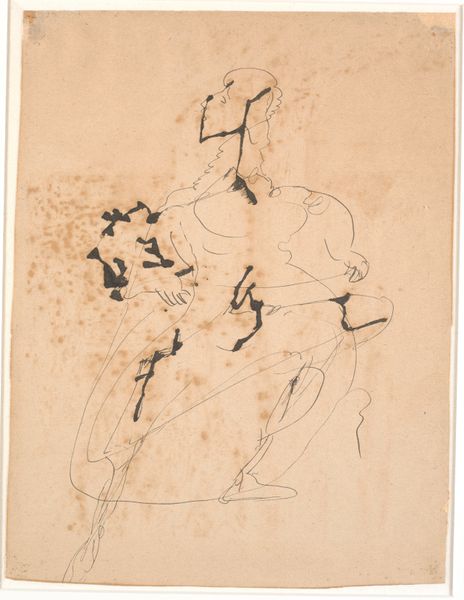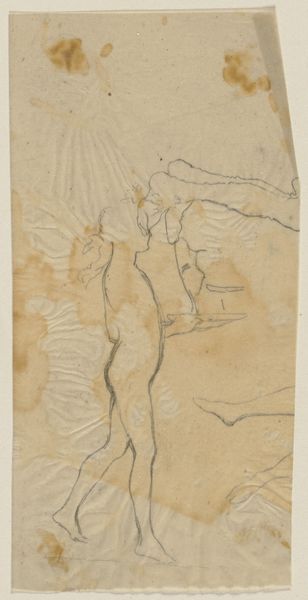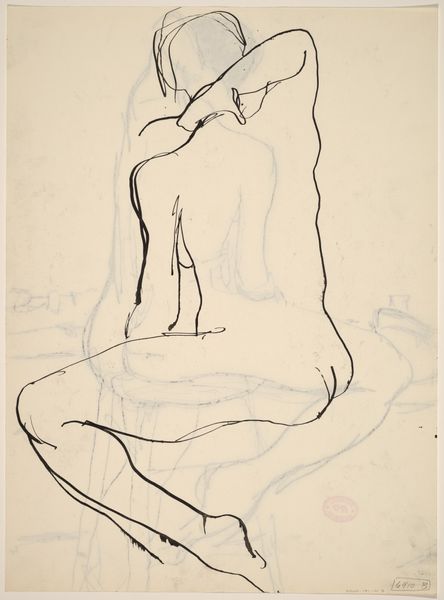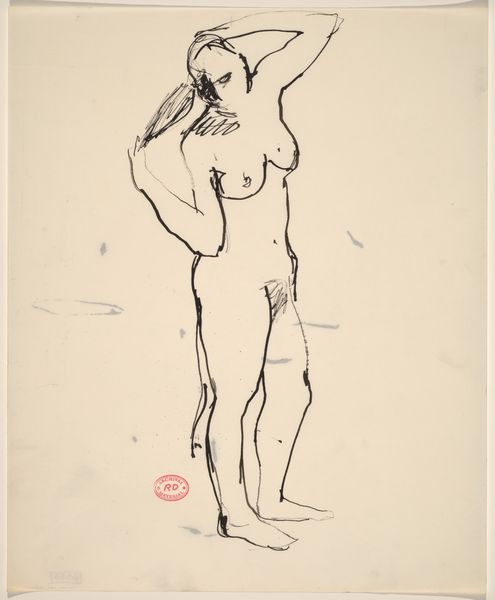
Copyright: Public Domain
Curator: This pencil and ink drawing, approximately dated 1868, is Victor Müller’s study of *Hamlet and Horatio*, now housed in the Städel Museum. Editor: It's so raw and spectral, isn't it? There’s an unsettling vulnerability in the figures, emphasized by their nudity and the sketch-like quality. It evokes a sense of exposure, almost as if we are witnessing a private moment of grief or realization. Curator: Precisely! Müller was part of a generation grappling with themes of disillusionment and the weight of history. The choice of *Hamlet* aligns perfectly; it's a narrative drenched in introspection, loss, and the search for meaning within a corrupted world. Editor: The nudity, though, it feels different than classical depictions of the nude. It's less about idealization and more about psychological rawness. The ghost of Hamlet’s father lurks unseen, his presence imprinted on their bodies, a tangible weight of unspoken trauma and societal rot. The spectral figure in the background emphasizes a shared trauma. Curator: I concur. Think about the cultural and political landscape of the time—the rise of industrialization, shifts in social order. Müller positions Hamlet and Horatio not as heroes, but as vessels of vulnerability, stripped bare of any heroic facade. They symbolize the common man facing existential questions within a world shifting under their feet. Editor: How do you think its creation, being a drawing versus painting, impacted its reception and role? Curator: Because drawings at that time were preparatory sketches, not fully realized paintings. It gives it that quality of immediacy, like we’re peering into the artist's mind, witnessing the birth of an idea, a crucial stage of visualization and formulation before committing to paint. It allows the public into a part of artistic creation often veiled behind finished pieces. Editor: Yes, that makes it so haunting. Like an unresolved trauma perpetually in the making. Curator: An incisive read. This piece captures an inflection point in how the Romantic artists, and subsequent movements, sought to grapple with symbols of masculinity, power, and the public's gaze. Editor: Indeed. It reminds us that even seemingly familiar narratives, like Hamlet's, continue to resonate and morph according to our collective anxieties and hopes.
Comments
No comments
Be the first to comment and join the conversation on the ultimate creative platform.

